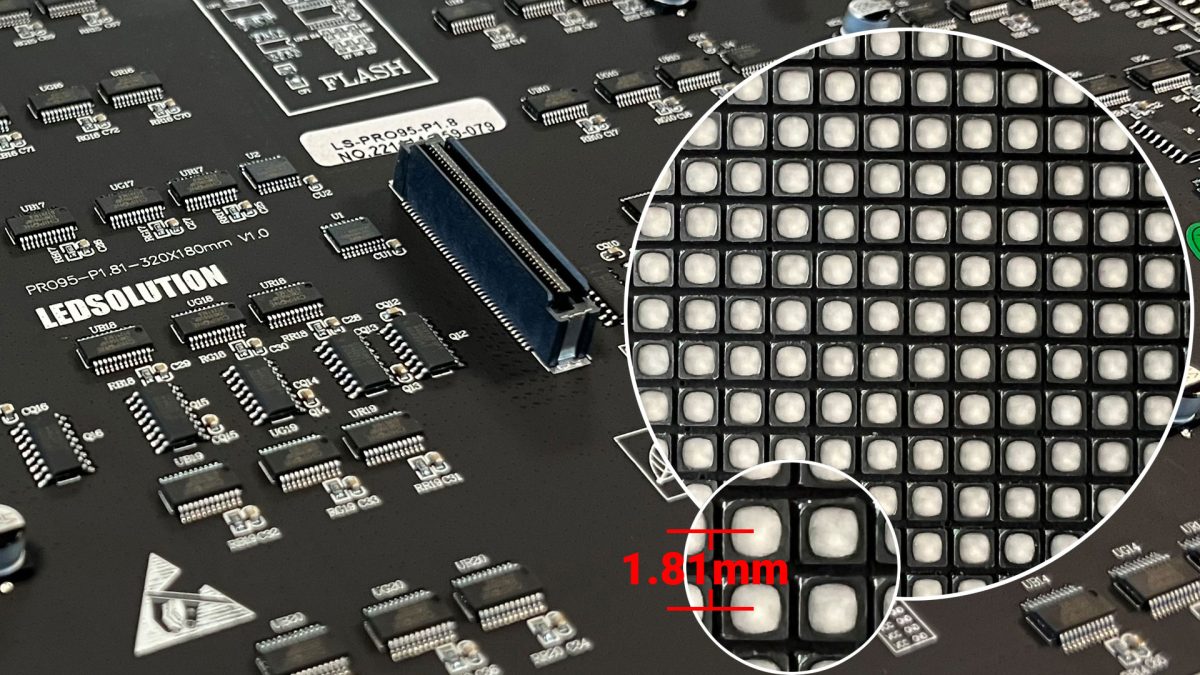Understanding Pixel Pitch and Its Impact on LED Display Quality
When choosing an LED display, one of the most crucial factors to consider is pixel pitch. This technical specification significantly impacts the display’s visual quality, viewing distance, and overall performance. Understanding pixel pitch and its influence can help businesses make informed decisions when selecting the right LED screen for their needs.
What Is Pixel Pitch?
Pixel pitch refers to the distance, measured in millimeters, between the center of two adjacent pixels on an LED display. For example, a display with a pixel pitch of 2mm (P2) has a 2-millimeter gap between the centers of its pixels. Smaller pixel pitches result in higher pixel density, which translates to better resolution and sharper visuals.

How Pixel Pitch Impacts LED Display Quality
- Resolution and Image Clarity
A smaller pixel pitch means more pixels are packed into the same area, resulting in a higher resolution. This is crucial for applications requiring fine details, such as retail displays, control rooms, or event backdrops where close-up viewing is common. Conversely, larger pixel pitches are suitable for outdoor billboards or displays meant to be viewed from a distance, where ultra-high resolution is less critical. - Viewing Distance
Pixel pitch determines the optimal viewing distance for an LED display. As a general rule, the minimum viewing distance (in meters) is approximately equivalent to the pixel pitch (in millimeters). For instance, a P5 display is best viewed from at least 5 meters away, ensuring the pixels blend seamlessly for a clear image. - Cost Considerations
Smaller pixel pitch displays require more LEDs per square meter, increasing production costs. While they offer superior image quality, businesses must weigh whether the added resolution justifies the expense for their specific application. - Brightness and Energy Efficiency
Larger pixel pitches tend to have fewer LEDs per square meter, which can result in lower power consumption and higher brightness levels. This makes them ideal for outdoor environments where brightness is a key factor. - Application Suitability
- Indoor Displays: Smaller pixel pitches (e.g., P0.9 to P2.5) are preferred for indoor use, where viewers are close to the screen. These displays are common in conference rooms, retail spaces, and exhibition booths.
- Outdoor Displays: Larger pixel pitches (e.g., P2 to P10) are typically used for outdoor signage and billboards, designed to be viewed from greater distances.
Choosing the Right Pixel Pitch for Your Needs
When selecting an LED display, consider the following factors:
- Viewing Distance: How far will the audience be from the screen?
- Content Requirements: Does your content include fine details or primarily large, bold visuals?
- Budget: What balance of quality and cost aligns with your project?
- Environment: Is the display for indoor or outdoor use?
For instance, a museum showcasing intricate visuals might opt for a P2 or smaller display, while a roadside billboard may use P5 or larger.
Conclusion
Pixel pitch is a foundational aspect of LED display technology that directly influences resolution, viewing experience, and application suitability. By understanding its role and considering your specific requirements, you can select the ideal LED display to maximize impact and effectiveness. Whether your goal is to captivate a nearby audience with stunning detail or communicate boldly across a distance, choosing the right pixel pitch ensures your investment delivers exceptional results.
For inquiries about LED display solutions, contact info@iledsolution.com or reach out via WeChat/WhatsApp at +86-18126509001. Our experts at LEDSOLUTION are here to help you find the perfect match for your needs.
#LEDSOLUTION






